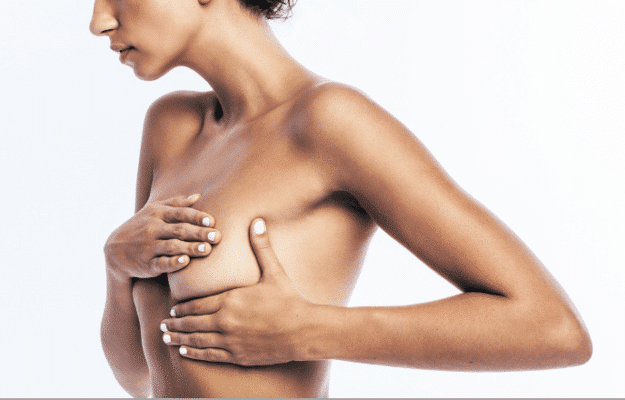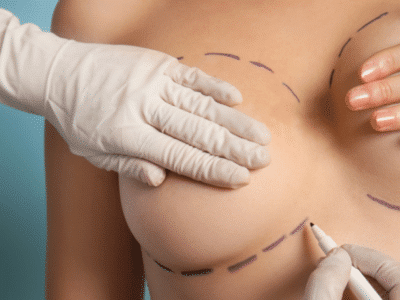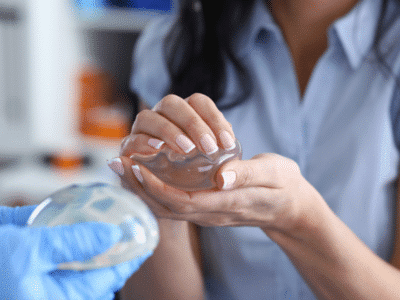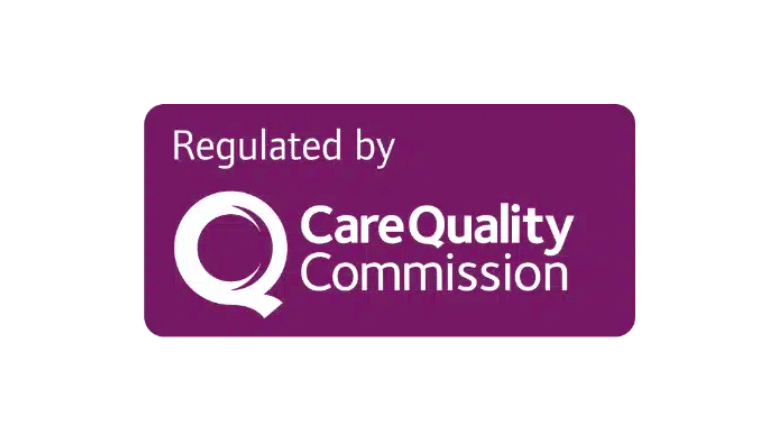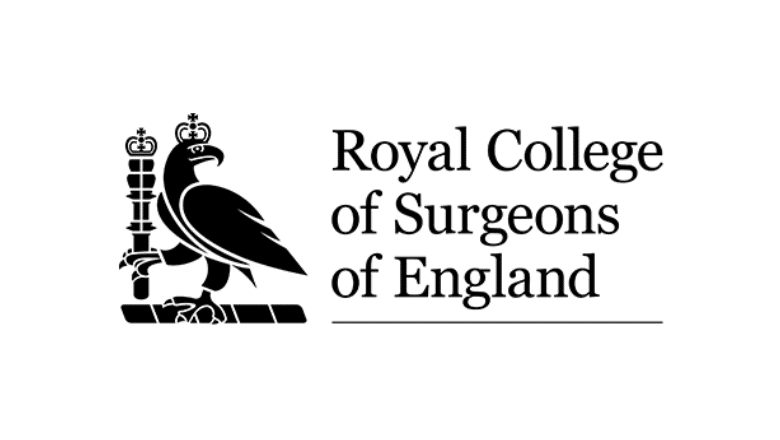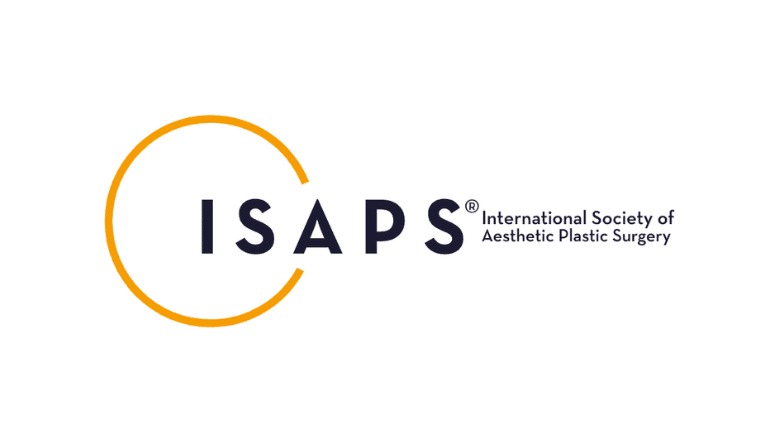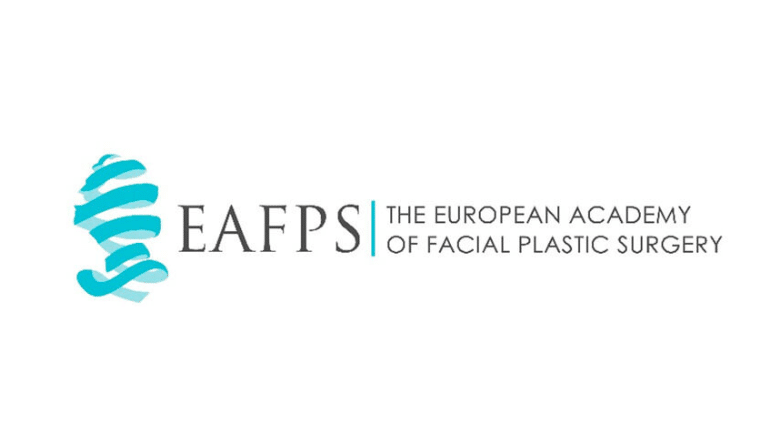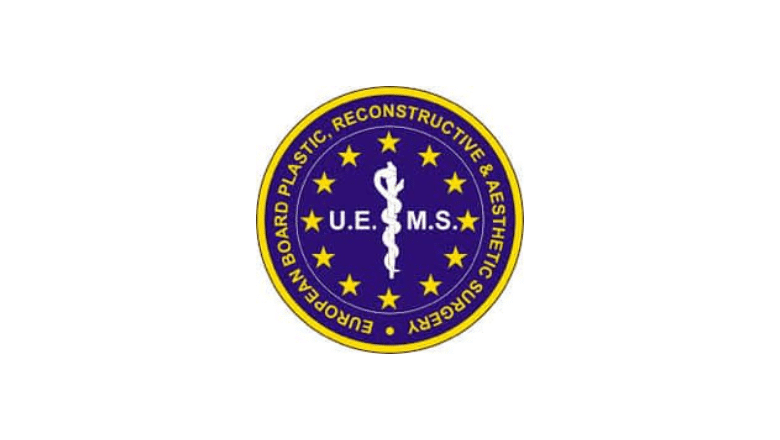Fat Transfer Breast Augmentation in London
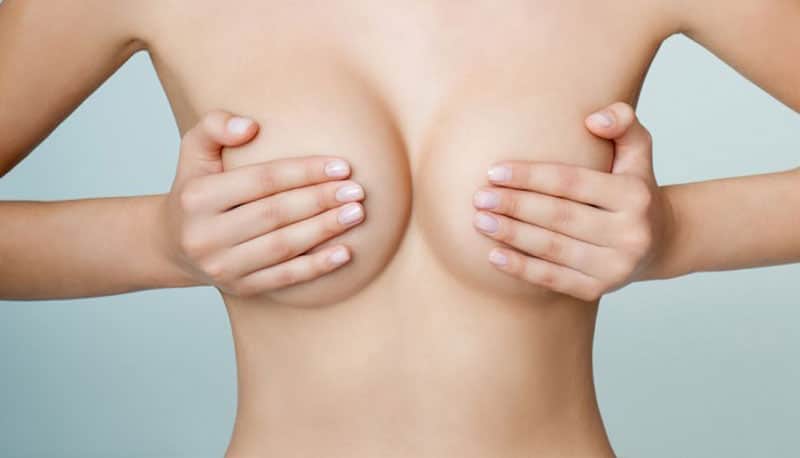
Enhancing Breast Volume through Natural Fat Transfer to Breasts
| Breast fat transfer | Fast facts |
|---|---|
| Procedure time | 2-3 hours |
| Anaesthetic type | GA |
| Length of stay | Day case |
| Up and mobile | Same day |
| Washing | 1 week |
| Travel | 4 weeks |
| Sexual activity | 4 weeks |
| Driving | 2 weeks |
| Back to work | 1 week |
| Postoperative garment | 6 weeks |
| Sleeping | On back 2 weeks |
| Exercise | 6 weeks |
| Full recovery | 6 weeks |
| Final results | 3 months |
What is Fat Transfer to the Breasts?
Breast fat transfer, also known as autologous fat grafting, is a cosmetic surgery procedure that uses your own body fat to enhance the size and shape of your breasts. This technique offers a natural and optimal alternative to traditional breast implants.
During the procedure, excess fat is removed from one area of your body, such as the abdomen or thighs, using liposuction techniques. The fat is then purified and re-injected into your breasts to create a fuller and more natural-looking breast appearance.

Unlike traditional breast augmentation with silicone implants, breast fat transfer surgery offers a more natural and appealing option for many women. The increased breast size achieved through fat transfer may be slightly less than the amount increased using implants, but the results are generally considered more natural-looking.
Our experienced plastic surgeons use the latest breast fat grafting technology to help you achieve your desired breast appearance through breast fat transfer. We can help you determine if this procedure is right for you and provide you with personalised recommendations to help you achieve your goals.
Fat Transfer to Breast Before & After Photos
Fat transfer to the breasts requires about three months to allow the newly transferred fat to be permanently incorporated. During the initial healing period, the intended final size and shape of the breasts may not be apparent until the fat has been fully incorporated after three months. It is generally accepted that approximately 60 to 70% of transferred fat into the breasts will survive in the long term. The remaining fact that has been injected gets naturally broken down and then subsequently reabsorbed by your body through natural processes.
Everyone heals differently, and therefore, the final result varies from person to person. During your face-to-face consultation with one of our plastic surgeons, you will get to view a range of breast augmentation with that transfer before and after photos. They should give you a clearer idea of what your breasts could look like following the fat transfer breast enlargement procedure based on what other patients have achieved with their procedure.
Should I Get a Fat Transfer Breast Augmentation?
The decision to get a fat transfer breast augmentation, or any other type of cosmetic procedure, is a personal one and should be based on your individual needs and goals.
RELATED: Fat transfer breast augmentation pros and cons
Fat transfer breast augmentation is a procedure where fat is taken from one part of the body (usually the abdomen, hips, or thighs) and transferred to the breasts to increase their size and volume. This procedure is appealing to some women as it is considered less invasive than traditional breast implants, and it can also help to reduce unwanted fat in other areas of the body.
However, it is important to consider that the results of a fat transfer breast augmentation can be less predictable than those of traditional breast implants, as the amount of fat that remains in the breasts can vary. Additionally, the procedure may require multiple treatments to achieve the desired results, and the results may not last as long as those of traditional breast implants.
Before making a decision, it is essential to discuss your goals and expectations with a qualified plastic surgeon, who can provide you with more information on the benefits and risks of fat transfer breast augmentation and help you determine if it is the right option for you.
Benefits of Fat Transfer to the Breasts
Fat transfer breast augmentation is a cosmetic procedure that involves removing fat from one area of the body and injecting it into the breasts to increase volume and improve shape. Here are the main benefits of this procedure over traditional breast implants:
Natural appearance
Fat transfer breast augmentation uses the patient’s own fat, which results in a more natural look and feel than breast implants. The fat is soft and pliable, which mimics the texture and movement of natural breast tissue.
Minimal scarring
Fat transfer breast augmentation is performed using tiny incisions, which result in minimal scarring. In contrast, breast implant surgery often requires a larger incision, which can result in a noticeable scar.
No risk of implant rupture
Fat transfer breast augmentation does not involve the use of implants, which means there is no risk of implant rupture or deflation. This can provide peace of mind for many patients, as well as eliminate the need for future implant replacement surgeries.
Minimal recovery time
Fat transfer breast augmentation is typically performed using local anaesthesia with sedation, which results in a minimal recovery time compared to traditional breast implant surgery. Most patients are able to return to work and normal activities within a few days.
Minimal foreign objects in the body
Because fat transfer breast augmentation uses the patient’s own fat, there are no foreign objects in the body, which can reduce the risk of complications and provide peace of mind for some patients.
Dual benefit
Fat transfer breast augmentation offers the dual benefit of removing unwanted fat from one area of the body while adding volume to the breasts. This can result in a more proportionate and aesthetically pleasing body contour.
Cost-effective
Fat transfer breast augmentation is often less expensive than traditional breast implant surgery, as it does not involve the cost of implants and does not require a hospital stay.
Should I Get Hybrid Breast Augmentation?

Breast augmentation with fat transfer can be performed as a viable alternative to breast implant surgery. Surgeons at Centre for Surgery are also trained in combining breast fat transfer with breast implants in one procedure. This is also known as hybrid or composite breast augmentation.
There are many patients who would like to achieve a natural-looking result, which often requires the use of smaller-sized breast implants, but would also like to optimise their cleavage. A wider gap between the breasts is often an issue in leaner patients who have breast implants alone. These cases are often ideal for fat transfer breast augmentation following the insertion of breast implants. The injected fat into the breasts helps to reduce the gap between the breasts and also helps to improve the natural cleavage without the requirement for very large implants, which carry risks of their own. Hybrid breast augmentation using both fat transfer and breast implants allows for a very natural-looking result and feel of the breasts due to that that has been removed via liposuction and has been injected around the implants.
Who is a Good Candidate For Breast Fat Transfer?
Fat transfer breast augmentation is a cosmetic procedure that can be a suitable option for many women who want to increase the volume and improve the shape of their breasts. Here are the factors that will help determine if you are a good candidate for this procedure:
Age
Fat transfer breast augmentation is typically recommended for women who are over the age of 18 and have reached full breast development.
Health
Good overall health is important for this procedure. You should be in good physical health and not have any medical conditions that could impair healing or increase the risk of complications.
Breasts
Fat transfer breast augmentation is not suitable for women with severely sagging or drooping breasts. However, it can be an option for women who have a mild to moderate amount of breast sagging, as the procedure can help lift and shape the breasts to a certain extent.
Body fat
Fat transfer breast augmentation requires a sufficient amount of body fat to be harvested from another area of the body. Women who are thin or have a low body fat percentage may not be good candidates for this procedure.
Lifestyle habits
Smoking and excessive alcohol consumption can impair healing and increase the risk of complications after surgery. If you smoke or consume excessive amounts of alcohol, it’s important to quit at least four weeks before the procedure.
Expectations
It’s important to have realistic expectations for the procedure and understand that the results may not be exactly what you expect. A specialist plastic surgeon can help you understand what the procedure can and cannot achieve.
Pregnancy plans
Fat transfer breast augmentation results can be affected by pregnancy and weight changes. Women who plan to have children in the near future or who have significant weight fluctuations may not be suitable candidates for this procedure.
These main factors will help determine if you are a good candidate for fat transfer breast augmentation. It’s important to discuss all options with a specialist plastic surgeon at Centre for Surgery to determine the best course of action. We do not treat patients below the age of 18 years of age.
Fat transfer to breasts is ideal for people who want subtle, natural-looking enhancements of the breasts. However, the individual has to have enough body fat to be transferred to the breasts.
We recommend breast augmentation with implants to individuals who do not have enough fat in their bodies to go ahead with fat transfer to breasts. Your surgeon may advise against having the procedure for individuals considering having children, as pregnancy and childbirth can affect the results.
The decision to have a fat transfer to breasts is a major step for most women and is extremely personal. Our surgeons, therefore, always guide and support their prospective patients through every stage of this process. During an initial consultation at our clinic, you will discuss your reasons for wanting this procedure and will undergo a thorough medical check-up.
How to Prepare for Fat Transfer Breast Augmentation
Fat transfer breast augmentation is a cosmetic procedure that involves removing fat from one area of the body and injecting it into the breasts to increase volume and improve shape. Here’s a step-by-step guide on how to prepare for this procedure:
Consult with a plastic surgeon at Centre for Surgery
The first step is to consult with a specialist plastic surgeon at our Baker Street clinic to discuss your goals, medical history, and any concerns you may have. Your surgeon will evaluate your overall health and determine if you’re a good candidate for the procedure.
Quit smoking
Smoking can impair healing and increase the risk of complications after surgery. If you smoke, it’s important to quit at least four weeks before the procedure.
Maintain a healthy diet
Eating a balanced diet and maintaining a healthy weight will help you recover more quickly and minimize the risk of complications. Your surgeon may also recommend taking vitamins and minerals to improve your overall health before the procedure.
Avoid certain medications
Some medications, such as aspirin and nonsteroidal anti-inflammatory drugs (NSAIDs), can increase bleeding risk. Your surgeon will advise you on which medications to avoid before surgery.
Arrange for transportation and recovery
Fat transfer breast augmentation is typically performed under general anaesthesia, so you’ll need someone to drive you home after the procedure. You should also arrange for help with household chores and caring for your children for a few days following the surgery.
Prepare your home for recovery
Set up your recovery area with comfortable pillows, books, and water. Make sure you have all the necessary items within reach, such as pain relievers, ice packs, and your phone.
Follow preoperative instructions
Your surgeon will provide specific instructions on how to prepare for the procedure, such as fasting or avoiding alcohol. Make sure you follow these instructions carefully to minimise the risk of complications.
How is Breast Fat Transfer Performed?
The breast augmentation with fat transfer procedure takes approximately 2 to 3 hours to perform, but this depends on the complexity of your case and whether fat is being harvested from more than one area of the body. Once your surgeon has taken a full medical history and performed a physical examination, they will be able to advise what the procedure will involve and how long it would be expected to take.
Fat transfer breast augmentation is a cosmetic procedure that involves transferring fat from one area of the body to the breasts to increase their size and improve their shape. The procedure typically involves the following steps:
Anaesthesia
Fat transfer breast augmentation is typically performed under general anaesthesia or intravenous sedation. The type of anaesthesia used will depend on the extent of the procedure and the preferences of the patient and surgeon.
Liposuction
The first step in the procedure is to remove fat from one or more donor sites, such as the abdomen, hips, thighs, or back. This is typically performed using liposuction, which involves making small incisions and using a cannula to suction out the fat.
Preparation of the fat
Once the fat has been removed, it is processed and purified to remove any excess blood, oil, or tissue. The fat is then prepared for transfer to the breasts.
Transfer of the fat
The fat is then transferred to the breasts through small incisions or needles. The fat is carefully placed in the breast tissue using a special technique, such as the Coleman technique, to ensure that the fat cells are evenly distributed and have a good blood supply.
Closure
After the fat has been transferred, the incisions are closed using sutures, tapes, or adhesive strips. The treated area is then bandaged to help reduce swelling and promote healing.
Recovery
After the procedure, the patient will need to rest and recover for several days to several weeks, depending on the extent of the procedure and the individual’s anatomy. The surgeon will provide specific instructions on how to care for the treated area, how to manage pain, and when to return for follow-up visits.
Breast Fat Transfer Recovery Time

Recovery after fat transfer breast augmentation can vary for each individual, but here is a general guideline for what you can expect week by week:
Week 1:
- Pain and swelling: You will likely experience some pain and swelling in the breast area immediately after the procedure. This can be managed with pain medication prescribed by your surgeon.
- Dressings and bandages: Your surgeon will apply dressings and bandages to the incisions to help reduce swelling and promote healing.
- Limited activity: You will need to limit physical activity for the first week after surgery to allow your body to heal. This may include taking time off work and avoiding strenuous exercise.
RELATED: How will my breasts feel after fat transfer to breasts?
Week 2:
- Decreased swelling: Swelling should start to decrease by the second week after surgery.
- Stitches removal: If you had any stitches, they will be removed by your surgeon around this time.
- Increased mobility: You may start to feel more mobile and be able to engage in light physical activity, such as walking and gentle stretching.
Week 3 to 4:
- Continued improvement: Swelling and pain should continue to decrease over the next few weeks.
- Increased activity: You may be able to gradually increase your physical activity, but it’s important to listen to your body and avoid anything that causes pain or discomfort.
- Follow-up appointments: You will have follow-up appointments with your surgeon to monitor your progress and ensure that you are healing properly.
Week 4 to 6:
- Resumption of normal activities: Most patients are able to resume normal activities, including work and exercise, by the end of the sixth week after surgery. However, it’s important to continue to avoid anything that causes pain or discomfort.
- Final results: It may take several months for the final results of the fat transfer breast augmentation to become apparent, as the transplanted fat cells may take time to settle and integrate with the surrounding tissue.
Fat transfer to breasts can help achieve one whole cup size with a very natural-looking result. The achievable result will depend on the surgeon’s skills to obtain the best quality fat and, equally, the patient’s ability to retain the transferred fat cells. Some fat cells will be absorbed naturally by the body and cannot be prevented. The natural ageing process could also have an impact on the result achieved.
RELATED: What is the recovery time for fat transfer to breast surgery?
When will I see the results of fat transfer breast augmentation?
The results are immediately noticeable after the procedure. There will be a degree of swelling during the postoperative period, which is often related to the initial infiltration of local anaesthetic during the procedure. This will settle over the course of a couple of weeks. In all fat transfer procedures, there will be some fat loss despite expert surgical techniques. It is realistic to expect 60-70% fat survival in breast fat transfer procedures. The breasts will continue to improve in appearance over the course of 3-6 months, and this is related to soft tissue remodelling to accommodate the extra fat volume. At the postoperative 3-6 month stage, the results are considered to be permanent, and the fat transferred will be part of the normal breast tissue. Your surgeon will take postoperative photographs at your 3-month appointment, which can be compared against the preoperative photographs.
Once full healing has taken place, you can decide with your surgeon if you are entirely happy with the volume and shape of your new breasts or whether you would like more volume with a small top-up procedure. It is important to note that the breast tissue will be affected most by future pregnancies and breastfeeding and, to a lesser degree, by the ageing process and weight changes. If you are affected by these factors, then a further top-up procedure may be warranted to achieve the results you are looking for. Where the degree of breast ptosis or sagging is moderate to severe, a breast lift procedure may be more appropriate to correct the change in shape. The results after fat transfer to the breasts are most evident in the first few weeks after surgery once any initial swelling and bruising have resolved. Final results will appear throughout 3-6 months as the fat becomes permanently part of your existing breast tissue.
What are the potential risks and complications of fat transfer breast augmentation?
Like any surgical procedure, fat transfer to breasts carries potential risks and complications. Here are some of the most common ones:
Fat reabsorption
One of the main risks of fat transfer breast augmentation is that some of the transplanted fat cells may not survive and be reabsorbed by the body. This can result in a reduction in volume and the need for additional procedures to correct the results.
Asymmetry
Fat transfer breast augmentation is a complex procedure that requires precise placement of the fat cells to achieve symmetrical results. Asymmetry may occur if the fat is not evenly distributed or if one breast heals differently than the other.
Scarring
Scarring is a common risk of any surgical procedure, including fat transfer breast augmentation. The incisions made during the procedure will heal over time, but scars may still be visible.
Infection
Although rare, infection is a possible complication of fat transfer breast augmentation. It can occur if bacteria enter the incisions during or after the procedure.
Changes in sensation
Some women may experience changes in sensation in the breast area after fat transfer breast augmentation, such as decreased sensitivity or increased sensitivity. This can be temporary or permanent, depending on the extent of the procedure and the individual’s anatomy.
Fluctuations in volume
Fat transfer breast augmentation results may change over time due to fluctuations in weight, pregnancy, and other factors that can affect the volume of the transplanted fat.
Anaesthesia risks
Like any procedure that involves general anaesthesia or sedation, fat transfer breast augmentation carries risks associated with the use of these medications, such as respiratory or cardiac complications.
Breast Fat Grafting Costs London - How Much is Breast Fat Transfer in London? - Prices & Fees of Fat to Breast

If you’re considering a fat transfer for breast enlargement in London, the cost of the procedure can vary depending on your individual circumstances. During your initial consultation, the surgeon will evaluate your breasts and provide you with an accurate quote for the procedure.
RELATED: How Much Does Fat Transfer Breast Augmentation Cost?
It’s important to note that natural breast enlargement using a fat transfer typically costs more than implant-based enlargements. This is because the surgery involves multiple procedures, including liposuction to harvest the fat and fat grafting to inject the fat into the breasts.
The total cost of the procedure will typically include the fees of the surgeon, anaesthetist, equipment, surgical staff, and clinic support and aftercare. At Centre for Surgery, we believe in transparent pricing and will provide you with a detailed breakdown of the costs during your initial consultation. We also offer financing options to help make the procedure more affordable for our patients.
Our experienced plastic surgeons are committed to helping you achieve your desired breast appearance through advanced fat transfer techniques. Contact us to schedule a consultation and learn more about the cost of fat transfer for breast enlargement in London.
The cost of fat transfer breast augmentation in the UK can range from £5,000 to £10,000 or more. It’s important to note that this is just a rough estimate, and the actual cost will depend on the specific details of your case.
Remember that the fat transfer breast augmentation cost is not typically covered by private medical insurance, as it is considered a cosmetic procedure. It’s important to discuss the cost of the procedure with your surgeon and obtain a detailed breakdown of all costs before making a decision.
Can I get fat transfer to breasts on the NHS?
Fat transfer breast augmentation is not typically covered by the UK’s National Health Service (NHS) as it is considered a cosmetic procedure. The NHS only covers procedures deemed medically necessary, and cosmetic procedures are generally not considered medically necessary.
If you have a medical condition that affects your breasts, such as a congenital deformity, you may be eligible for breast surgery on the NHS. In such cases, the procedure will be evaluated on a case-by-case basis, and the NHS may cover some or all of the cost.
Complementary Cosmetic Procedures
The integration of complementary procedures such as the Brazilian Butt Lift (BBL) and Tummy Tuck with Fat Transfer Breast Augmentation. Each of these procedures, when combined, can dramatically enhance and redefine the natural curves and contours of the body, contributing to a more balanced and aesthetically pleasing silhouette.
Brazilian Butt Lift
Brazilian Butt Lift (BBL) is a highly sought-after fat grafting procedure that enriches the volume and refines the shape of the buttocks. It involves meticulously removing fat from selected areas through liposuction, which is then purified and strategically injected into the buttocks. This enhances the buttocks’ appearance and contours the areas from which fat is harvested.
When paired with Fat Transfer Breast Augmentation, the benefits are twofold. Firstly, this combination allows for a more defined sculpting of the liposuction areas, as fat is carefully redistributed to both the breasts and buttocks. Secondly, it amplifies the body’s curves, accentuating an hourglass figure that many find highly desirable. This synergy of procedures underscores a holistic approach to body contouring, where enhancing one area complements and enhances the overall body shape.
Tummy Tuck
A Tummy Tuck, medically known as abdominoplasty, is another complementary procedure that can be seamlessly integrated with Fat Transfer Breast Augmentation. This procedure is specifically designed to remove loose, excess skin from the abdomen, resulting in a contoured and flattened stomach. The strategic removal of fat from the abdomen for breast augmentation can be perfectly complemented by a Tummy Tuck, which addresses and removes the lax skin in the same area.
This combination is particularly effective because it targets stubborn fat and excess skin in the abdominal area, dramatically improving the upper body’s appearance. The removal of fat cells during breast augmentation provides the raw materials for enhancing breast volume, while the Tummy Tuck ensures the abdomen remains tight and flat, further emphasising the upper body’s newly augmented contours.
Fat Transfer to Breasts in London: Discover Excellence at Centre for Surgery

FAQs
-
Can You Enhance Your Breasts Using Your Own Body Fat?Yes, enhancing your breasts with your own body fat is a viable option. This method, known as autologous fat transfer, involves relocating fat from one part of your body to your breasts to achieve fuller, natural-looking results. It's an increasingly popular alternative to traditional breast implants, offering a less invasive solution with the added benefit of contouring areas where the fat is harvested.
-
How Can I Enhance My Breast Size Without Implants?For those looking to increase their breast size without the use of implants, the autologous fat transfer, commonly referred to as the fat to breast procedure, presents a natural alternative. This technique utilises your own body fat, harvested from areas like the abdomen, thighs, or buttocks, and injects it into the breasts to add volume and shape.
-
What Solutions Are Available for Underdeveloped Breasts?Underdeveloped breasts can be addressed through a variety of enhancement procedures. Options range from the insertion of saline or silicone breast implants to autologous fat transfer, or a combination of both, known as hybrid augmentation. Each method offers different advantages, and the choice depends on the individual's goals and physical characteristics.
-
What are the advantages of breast fat transfer in London?Breast fat transfer, also known as autologous fat grafting, offers several advantages compared to traditional breast augmentation with silicone implants. Some of the advantages of breast fat transfer in London include:
Natural-looking results: Breast fat transfer uses your own natural body fat to enhance your breasts, resulting in a more natural and subtle breast appearance that is unique to you.
Minimal scarring: The procedure involves small incisions for liposuction and fat injection, which can result in minimal scarring compared to traditional breast augmentation with implants.
Dual benefits of liposuction: The procedure not only enhances your breasts, but also helps contour and remove excess fat from other areas of your body, such as the abdomen or thighs.
Fewer complications: Since the procedure uses your own natural body fat, there is a lower risk of complications such as capsular contracture, implant rupture or leakage, or allergic reactions.
Long-lasting results: The results of breast fat transfer can be long-lasting, especially when combined with a healthy lifestyle and exercise.
Customizable results: Your surgeon can customize the procedure to achieve your desired breast size and shape, taking into account your unique body type and aesthetic goals.
At Centre for Surgery, we specialize in breast fat transfer and are committed to helping you achieve your desired breast appearance through this advanced technique. Our experienced plastic surgeons use the latest technologies and techniques to ensure the best possible results for our patients. -
Does a fat transfer breast augmentation affect breast cancer risk or mammograms?Fat transfer breast augmentation is a cosmetic procedure that involves transferring fat from one part of the body to the breast to increase its size and fullness. In terms of breast cancer risk, it has been suggested that there is no increase in the risk of developing breast cancer as a result of the procedure. However, fat transfer can make it more difficult to detect breast cancer on mammograms, as the additional fat tissue can obscure the underlying breast tissue, making it harder to see any abnormal changes.
In terms of mammograms, it's recommended to inform the radiologist of the fat transfer procedure before the mammogram, as they may need to adjust their imaging techniques to get a clear view of the breast tissue. In some cases, additional imaging such as ultrasound or MRI may be necessary to get a clear view of the breast tissue after a fat transfer.
It's important to keep in mind that fat transfer breast augmentation is still considered a relatively new procedure and long-term studies on its effects on breast cancer risk and mammograms are limited. Therefore, it's important to discuss the potential risks and benefits of the procedure with a qualified medical professional and weigh these against your personal goals and health history. -
What does the fat transfer to breast procedure involve?Fat transfer to the breast is also known as lipofilling, fat grafting, and fat injections to the breast. Fat transfer breast augmentation is a specialist surgical treatment involving the liposuction of unwanted fat from a part of the body followed by careful processing of the fat using filtering, washing and decantation. The processed fat is then reinjected. It is a safer and less invasive option than having breast enlargement with silicone implants.
The fat transfer procedure to the breast takes place in two stages. The first step involves the harvest of fat using gentle liposuction from the donor areas of fat. Commonly treated areas include the abdomen, thighs, back and arms. The liposuction is carried out under a low suction force to preserve the delicate fat cells. Power-assisted liposuction is often used as part of this process. The second damage involves the purification of the collected fat in a specially designed sterile fat canister. The processed fat is then reinjected using fine cannulas into targeted areas of the breast for volume, shape and contour enhancement. A fat transfer to breast procedure can address both size and shape. Fay is injected in small amounts on each pass as this helps to increase the viability of the transferred fat. Injecting too much in a single pass might reduce fat cell viability.
Compared with breast augmentation using implants, the fat transfer to the breast procedure takes longer. This is often in the range of 2-3 hours, depending on the number of areas of liposuction. The process for harvesting, purifying and injecting fat is a very specialist process that takes time and should not be rushed. The priority in treatment is to create a natural appearance in harmony with the patient's body shape and contour.
The final stage of reinjecting the fat is performed through small incisions, often more than 2 to 3mm in length. These tiny scars heal very well, leaving a barely perceptible scar after several months. Although the fat transfer to the breast can be performed under local and general anaesthesia, it is recommended in most cases to have the procedure under a general anaesthetic for optimum comfort. In cases involving small amounts of fat transfer from a single liposuction area, a local anaesthetic can work very well. Examples include revision cases or patients desiring only a subtle correction. About one week recovery time is usual after fat transfer to breast procedure. Virtually all patients are back to their normal activities one month after the lipofilling procedure. -
How Much Fat Is Required for a Successful Breast Fat Transfer?For a successful fat transfer to the breasts, surgeons typically aim to harvest at least 800 millilitres of fat and fluid. This allows for around 400 millilitres to be injected into each breast, with an expected retention of approximately 200 to 250 millilitres. The exact amount needed varies depending on the desired increase in breast size and the individual's body composition.
-
How many fat transfers will I need?The number of fat transfers that you may need for breast augmentation will depend on various factors, including the size and shape of your breasts, the amount of fat available for transfer, and your desired outcome.
During your initial consultation, your surgeon will evaluate your breasts and discuss your aesthetic goals with you to determine the best course of action. In some cases, a single fat transfer may be enough to achieve your desired breast size and shape.
In other cases, multiple fat transfers may be necessary to achieve optimal results. However, it's important to note that too many fat transfers may increase the risk of complications and may not necessarily lead to better results. -
What Is the Maximum Size Increase Possible with Fat Transfer to the Breasts?The increase in breast size achievable through fat grafting procedures is generally about 1 bra cup size. This outcome largely depends on the amount of available fat and the individual's weight fluctuations post-procedure. The survival rate of the injected fat, which can be around 50-60%, also plays a crucial role in the final result.
-
Am I a good candidate for fat transfer to breasts?Natural breast augmentation is suitable for anyone wanting to enhance the shape and size of their breasts. However, you must have enough fat in other body areas for an effective breast fat transfer to take place. You are also a good candidate if you are not considering having children in the first couple of years after the natural breast augmentation procedure, as volume loss is possible with pregnancy and breastfeeding. If you have sagging breasts, you may be better suited for a breast uplift and fat transfer to breasts can be combined with a breast uplift for natural volume breast enhancement. If you are looking for a more dramatic and predictable increase in the size of your breasts, then a breast augmentation with implants may be more suitable.
The fat transfer to breasts procedure is performed by highly skilled breast augmentation experts who will utilise fat deposits from a donor area and transfer it to the breasts for a natural enhancement. -
How do I prepare for breast fat transfer surgery?Preparing for breast fat transfer surgery involves several steps to ensure that you have a safe and successful procedure. Here are some tips on how to prepare for your breast fat transfer surgery:
Follow pre-operative instructions: Your surgeon will provide you with specific instructions to follow prior to your procedure. These may include avoiding certain medications or supplements, stopping smoking, and fasting before surgery.
Arrange for transportation: You will not be able to drive yourself home after the procedure, so it's important to arrange for a responsible adult to take you home.
Prepare your recovery area: Before your surgery, prepare a comfortable area in your home where you can rest and recover. This may include arranging for someone to help you with meals and household chores during your recovery.
Stock up on supplies: Your surgeon may provide you with a list of supplies to purchase before your procedure, such as loose-fitting clothing, ice packs, and pain medication.
Avoid alcohol and caffeine: It's important to avoid alcohol and caffeine for a few days before surgery, as they can interfere with the healing process.
Stay hydrated: Drink plenty of water in the days leading up to your procedure to ensure that you are well-hydrated. -
What Does Natural Breast Augmentation Involve?Natural breast augmentation refers to the process of increasing breast size through fat transfer surgery. This method capitalises on your body's natural fat reserves, enhancing breast volume without the need for synthetic implants, offering a more organic augmentation option.
-
Is natural breast augmentation using fat transfer the right procedure for me?Natural breast augmentation using your body's own fat is an ideal procedure for breast enhancement if you are looking for a more naturally appearing breast as opposed to the fake look which can be achieved with breast implants. The procedure produces more modest results compared with implant based breast augmentation. Fat transfer to breasts is great for the younger woman with good skin elasticity of the breasts but is also routinely used in breast reconstruction surgery following breast cancer removal. For women with thin soft tissue coverage in the upper part of the chest, the outline of the breast implant may sometimes be visible and fat transfer to breasts is ideal for filling out the prominent areas and can also be used to enhance upper pole fullness of the breast which is commonly lost after childbirth.
Women who prefer a more dramatic increase in bust size are better suited to having a breast enlargement with implants. It is often the case however than an increasing number of women prefer not to have an artificial silicone prosthetic implant inserted in their chest and prefer a more natural filler material like the body's own fat. It is important to remember that fat transfer breast augmentation produce more modest results and it is realistic to expect no more than one increase in cup size.
The results from a natural breast augmentation can be refined with a another fat transfer procedure if you would like more volume. This will require sufficient fat stores to be present for enough fat to be harvested for the breast fat transfer. A common body type of women who seek fat transfer to breasts are slim and athletic in nature and will therefore have very little donor fat available for an effective breast fat transfer. Your surgeon will be able to advise you of your suitability for natural breast augmentation at your consultation.
With any fat transfer procedure, it is key to have realistic expectations of what the procedure can achieve as there is always a small element of unpredictability with the fat transfer process as not all fat will survive the transfer procedure. This is the advantage of a surgical breast augmentation with implants which gives a predictable increase in breast volume without risk of fat loss. The results can be affected if you choose to breastfeed within a year of surgery.
A great benefit of breast fat transfer surgery is that the combined nature of the procedure with both liposuction and fat transfer. The surgeon first performs liposuction and at the same time the surgeon is able to contour the area, an example being a flatter abdomen if fat is taken from here. The procedure is a two-in-one treatment with simultaneous body contouring and natural breast augmentation.
Results after breast fat transfer are determined by a number of factors. These include the amount of fat which can be safely harvested via liposuction and your current breast size. Fat transfer breast augmentation may in certain cases require a top-up procedure to achieve the final result. It is important to bear this in mind when considering the procedure. At Centre for Surgery, your surgeon will carry out a comprehensive clinical assessment at your consultation and will be be able to expertly advise on the best treatment options. -
Is fat transfer to breasts an effective procedure?Fat transfer to breasts is an excellent procedure for natural breast augmentation.
Our surgeons use breast fat transfer for a number of key applications:
- Women with thin skin who have had or are planning to have a breast augmentation with implants can benefit from fat transfer to conceal the edges of the implant which may be visible through the skin and cleavage area. When fat transfer is performed at the same time as an implant breast augmentation, this is referred to as a composite breast augmentation.
- Optimisation of breast shape following surgery for breast cancer as part of a second stage breast reconstruction procedure.
- An alternative to breast augmentation with implants for an increase in breast volume of no more than one cup size. For patients who prefer more larger increases in volume, it may be sensible to perform a staged procedure to optimise the amount of fat which 'takes' in the new breast site. Women after pregnancy often experience deflated and empty breasts especially in the upper aspect and fat transfer to the upper of the breasts can help to restore a youthful breast contour.
Breast fat transfer treatment effectiveness is determined by a number of factors including amount of available fat for transfer and the skin elasticity of the breast. Younger women with available fat and who not planning to get pregnant soon are ideal candidates.
Most women who choose fat transfer to breasts do so because it is safer way to increase the volume of the breasts without the requirement for an artificial silicone breast implant. The fat transfer process takes place using your body's own fat thus eliminating the risk of an allergic reaction occurring. With the removal of fat via liposuction from other areas such as the abdomen and thighs, patients can benefit from a two-in-one body contouring and breast enhancement procedure. -
Who is not a suitable candidate for fat transfer to breasts?Your surgeon may determine that you are unsuitable for the procedure if you have insufficient reserves of fact located in other parts of your body. This means that being able to have a significant breast enlargement with fat is not possible.
Patients who actively smoke will also be deemed to be on suitable candidates for the surgery as smoking has a negative impact on fat survival. -
Can smoking an alcohol affect the results of fat transfer to breasts?Smoking and alcohol are to lifestyle factors associated with an increased risk of potential complications both during and after breast fat transfer surgery. Other factors include a BMI over 30 and taking certain drugs which may affect the immune system as well as the taking off recreational drugs such as cannabis. Smoking is a particularly Undesirable lifestyle factor for fat transfer surgery as the constituents of tobacco smoke can affect the microcirculation to the body. This means there could be a potentially higher risk of infection as well as delayed healing. Our surgeons strongly recommend for all patients to stop smoking at least four weeks before their procedure and consider using nicotine replacement products. Excessive alcohol consumption is also a potential risk factor for adverse outcomes after surgery and it is strongly recommended to reduce alcohol intake before surgery. We recommend complete abstinence from alcohol for at least 72 hours before the procedure to avoid interference with the anaesthetic. The viability of fat transfer is adversely affected by smoking with fat survival rates as low as 30% in those who continue to smoke after the procedure. Your surgeon will Advise you to lose weight if your BMI is over 30 to reduce the risk of post-operative surgical complications.
-
How much body fat do I need for the fat transfer to breast procedure?The amount of fat you need on your body depends on how much added volume you desire on your breasts. The surgeon will need to assess this during your consultation.
-
Can Belly Fat Be Used for Breast Reconstruction?Excess belly fat is an excellent source for breast reconstruction, offering a natural feel and appearance. This method is particularly beneficial for individuals seeking reconstruction after mastectomy or those desiring to utilise their own tissue for augmentation.
-
How long does fat transfer last in breasts?The longevity of fat transfer to the breasts can vary from person to person. While the results of fat transfer are generally long-lasting, some of the transferred fat may be reabsorbed by the body over time, which can affect the final outcome.
Studies have shown that on average, about 60-80% of the transferred fat will survive long term, meaning that the remaining 20-40% of the transferred fat will be absorbed by the body. However, the actual percentage of fat that survives can vary depending on several factors, including the patient's age, lifestyle, and overall health.
To maximize the longevity of your results, it's important to maintain a healthy lifestyle that includes regular exercise and a balanced diet. Avoiding significant weight fluctuations can also help ensure that the transferred fat remains stable over time. -
Is fat transfer to the breast painful?The amount of pain experienced during and after fat transfer to the breast can vary from person to person. However, the procedure is generally well-tolerated; most patients only report mild discomfort.
During the procedure, you will be given local anaesthesia to numb the areas where the fat will be harvested and injected. This should help minimise any pain or discomfort during the procedure.
After the procedure, you may experience some discomfort, swelling, and bruising in the treated areas. Your surgeon will prescribe pain medication to help manage any discomfort, and you may be advised to wear a compression garment to help reduce swelling.
Most patients are able to return to work and other normal activities within a few days after the procedure. However, it's important to follow your surgeon's aftercare instructions closely to ensure the best possible outcome and minimize any potential discomfort. -
How is the fat grafting to breasts procedure performed?Liposuction is first performed to collect good fat cells from the donor area
Fat is purified
Fat is then injected back to the breasts using multiple syringes -
How long does the fat transfer to breasts procedure take?On average the procedure takes around 3 hours, but it solely depends on how much fat you are looking to get transferred.
-
Is fat transfer breast augmentation painful?The fat transfer breast enlargement procedure is performed using TIVA anaesthesia, making the experience relaxed and pleasant throughout the whole procedure.
-
Will I be left with scars after breast lipofilling?The incisions made for the cannula to go in during liposuction may leave small scars that will fade away over time.
-
What is the recovery like after fat transfer to breast surgery?Immediately after the fat transfer to breast procedure, it is completely normal to experience a mild to moderate degree of bruising and swelling, but this rapidly settles down over the first two weeks after surgery. The overall recovery time after breast fat transfer depends on how many areas you had liposuction from. Patients who had liposuction from one or two areas can expect a quicker recovery than those who had liposuction from three or more areas. Patients should avoid intense exercise during the first four weeks to avoid further loss of fat, and it may be sensible to arrange time off work for the first one to 2 weeks. It is normal to have a degree of mild post-operative discomfort in the region of the breasts and the liposuction donor areas, but this rapidly settles down after a few days and is markedly improved with over-the-counter painkillers such as paracetamol and or ibuprofen.
-
What Is the Recovery Period for a Fat Transfer Procedure?Recovery time from a fat transfer to the breast surgery generally spans four to six weeks. During this period, patients are advised to follow post-operative care instructions closely to ensure optimal healing and outcomes.
-
What Side Effects Can Occur After Breast Fat Transfer?Common side effects post-surgery include swelling, bruising, and redness in the treated area. While these are typically temporary, there's a risk of more serious complications such as cyst formation, infection, or necrosis of the fat cells.
-
What are the risks associated with fat transfer to breasts?When carried out by an expert surgeon experienced in breast fat transfer, the procedure carries a minimal risk of complications. However, with all types of surgical procedures, there are several recognised risks of surgery. These include:
- haematoma
- seroma
- fat necrosis
- prominent scarring
- breast asymmetry
There are also other more general risks of surgery, including:
- surgical site infection
- DVT or PE
- prolonged bleeding
- allergic reaction to any medicines given during the procedure
At the Centre for Surgery, our surgeons are highly experienced in fat transfer to breast procedures and are trained to manage all complications that may arise due to breast fat transfer. At your consultation, the surgeon will go through in detail all the potential risks and complications of breast fat transfer surgery and allow you to answer any questions you may have about the procedure. You will also be given detailed preoperative and post-operative instructions to ensure you get the best results following breast fat transfer. -
Is There a Risk of Lumps Forming After Fat Transfer to the Breasts?Properly performed fat transfer procedures should not cause lumps in the breasts. However, fat necrosis, where transferred fat cells die, is a potential complication. It's essential to discuss the risk of this and other complications with your surgeon and follow their guidance to minimise risks.
-
How should I sleep after fat transfer to the breast?After undergoing a fat transfer to the breast, it's recommended to sleep on your back at a 30 to 45-degree angle for the initial 4 to 6 weeks. This position helps reduce swelling and supports optimal fat survival. Sleeping on your stomach or side should be avoided during the recovery phase.
-
What results can I expect from fat transfer to breast?Patients who have fat transfer to breasts will notice an obvious and immediate improvement in the appearance of their breasts following surgery. There is often an element of swelling during the early part of the recovery period due to the injection of tumescent local anaesthesia. This will settle down after 1 to 2 weeks. Not all fat survives the transfer process, and it is inevitable to experience some fat loss over the first week or two. It is realistic to expect between 60 to 70% fat survival. As the newly grafted fat integrates with the breast, the shape and feel of the breasts will continue to evolve over the first three months.
By the 3 to 6-month mark, any changes in the breast can be expected to be permanent in nature as a fat integrates with the existing breast tissue. It is then at this point that photographs will be taken to compare with the preoperative images.
In some cases, it may be desirable to have a small amount of extra fat grafting to fine-tune and refine the initial procedure results. This is a normal process with any fat grafting procedure due to the unpredictability of fat survival. Newly transplanted fat behaves in much the same way as normal fat in the breast. Any changes such as pregnancy changes in weight or the ageing process will affect the fat in much the same way as before. Any volume loss that occurs with weight loss or the ageing process can be easily corrected with further fat grafting if required and can be combined with breast lift surgery, also known as mastopexy.
Although natural breast augmentation results with fat grafting will be noticeable immediately, you'll continue to see improvements in the breast over the first few weeks once any localised swelling and bruising have settled down. Final results will be evident by the 3 to 6-month mark. As with all fat transfer procedures, avoiding smoking at any point is vital to maximise the fat survival rate. -
Are the Results from Breast Fat Transfer Permanent?The outcomes of fat transfer breast augmentation are considered permanent, provided the patient maintains a stable weight. Unlike implants, this method offers a natural alternative, though the longevity of results can be influenced by various factors, including lifestyle and the body's response to the transferred fat.
-
Are there limitations in the results I can achieve after breast fat transferDo not expect to gain two to three cup sizes following your surgery as some percentage of the fat will be absorbed naturally by your body. You may be able to gain at least one cup size, but that also depends on your own body.
-
How long does a fat transfer breast augmentation last?The duration of the results from a fat transfer breast augmentation can vary, but it is generally considered to be a long-lasting solution for increasing breast volume.
Studies have shown that approximately 50-70% of the injected fat will persist in the breasts, with the remaining being absorbed by the body. This means that the volume increase from the fat transfer is expected to be long-lasting, although the exact duration will depend on several factors, such as the patient's age, weight, and lifestyle habits.
It's important to note that some degree of fat reabsorption is normal and expected, so it's not uncommon for the results to settle somewhat over the first few months after the procedure. However, the remaining fat is typically stable, and patients can enjoy the results for several years.
In some cases, a second fat transfer procedure may be needed to maintain the desired volume, especially if there are significant changes in weight or age. However, this is not always necessary and depends on the individual patient.
Overall, fat transfer breast augmentation is a long-lasting solution for increasing breast volume and can provide natural-looking results that can last for several years. -
How much does fat transfer to breasts cost?The exact price will depend on the number of areas of liposuction, whether you have had similar surgery before and the degree of natural breast enlargement you desire to have. Once you have had a face-to-face consultation with the surgeon, you will receive clear costings from your dedicated patient coordinator.
-
Can I breastfeed after fat transfer to the breast?Breastfeeding after a fat transfer to the breast may be possible, but it's important to discuss your plans with your surgeon before the procedure.
In general, breast fat transfer is less likely to affect your ability to breastfeed compared to breast augmentation with implants. This is because the procedure involves the transfer of your own natural body fat rather than foreign materials that can potentially interfere with breastfeeding.
However, it's important to note that the procedure may involve some breast tissue disruption, potentially affecting your milk production. Additionally, if the transferred fat is injected into the milk ducts or glands, it could potentially cause blockages that can interfere with milk flow.
If you plan to breastfeed after your fat transfer procedure, it's important to discuss this with your surgeon beforehand. They can provide you with specific advice and guidance on minimising potential risks and ensuring the best possible outcome. In some cases, delaying the procedure until after you have finished breastfeeding may be recommended to avoid any potential complications. -
Should I Wear a Bra After Undergoing Fat Transfer to the Breast?Post-procedure, it's advisable to avoid wearing traditional bras for up to three months to prevent pressure on the breasts. Instead, wearing a specially designed compression bra is recommended to support healing and shape retention during the recovery period.
-
How does fat transfer compare with breast implants?- Advantages of Breast fat transfer:
Use of foreign material not involved
Can increase size by one cup size
Fat removal is part of the procedure
Incisions involved are small and fade away over time
Does not carry the risk of rupture or capsular contracture
A decrease in any sensation is very unlikely
- Disadvantages of Breast Implants:
Insertion of artificial silicone implant
Can increase size as desired, taking various factors into consideration
Involves a 3-5 cm length incision
The potential risk of implant rupture or capsular contracture
May experience loss of sensation, temporary or long-term
What To Expect
The consultation
If you are interested in fat transfer to the breast, the first step is to schedule a consultation with one of our expert fat transfer surgeons. During the consultation, your surgeon will take several measurements of your breasts and the areas where fat will be harvested. They will also assess the quality of your soft tissue and discuss the full range of treatment options, including breast augmentation with implants.
If you are a suitable candidate for fat transfer, your surgeon will explain the procedure in detail and take high-resolution photos, which may also be used for computer digital imaging. They will discuss the potential risks and complications of the procedure and provide you with information on what to expect during the postoperative period.
During the consultation, your surgeon will also take a full medical history, including any previous surgeries and medications that you are taking. This information will be used to determine your fitness for the procedure.
After the consultation, we recommend that you take time to reflect on all the information provided and weigh your options. We also recommend a minimum of a 2-week cool off period before proceeding with the procedure.
At Centre for Surgery, we understand the importance of informed decision-making, and we encourage our prospective patients to have as many follow-up consultations as needed to ensure that they have all the information necessary to make an informed decision about breast fat transfer surgery. Our experienced surgeons are skilled in all types of liposuction for fat harvest, including power-assisted liposuction, and are trained in hybrid breast augmentation, which involves a combination of fat transfer and implants to enhance the female breast.
Before your procedure
Once you have decided to proceed with fat transfer to the breast, our preoperative assessment team will be in touch to prepare you for the procedure. To ensure a safe and successful procedure, there are several recommended actions you should take before the surgery.
Firstly, it is highly recommended to stop smoking for at least 6 weeks before the procedure. Smoking is associated with a number of risks, including delayed wound healing, which could result in wound infection. Moreover, smoking is strongly associated with a reduced fat survival rate, leading to less fat being successfully grafted to the breast recipient site. This can result in smaller breast volume.
Secondly, you should avoid aspirin and all medicines containing aspirin for at least one week before the procedure. Aspirin increases the risk of bleeding and could lead to the formation of a haematoma (collection of blood beneath the skin).
Lastly, for 6 hours before the breast fat transfer procedure, you should refrain from eating any food or any type of drink apart from sips of clear fluid (water and tea/coffee without added milk), which is allowed for up to 2 hours before the procedure. This is necessary as you will have a general anaesthetic, and having an empty stomach reduces the risk of anaesthetic complications occurring.
By following these recommended actions, you can help ensure a safe and successful fat transfer to the breast procedure.
On the day of the procedure
On the day of your breast fat transfer procedure at Centre for Surgery, it is important to arrive at the confirmed time. Upon arrival, you will be admitted by one of our nursing team who will check your vital signs, such as blood pressure, pulse, and temperature, and then provide you with single-use clinic wear.
The anaesthetist will then assess you to make sure you are fit for the TIVA anaesthetic and prescribe oral pre-medications, including anti-sickness medicines and medicines for reducing bleeding, to help your recovery after the procedure. Your surgeon will confirm the procedure to be undertaken, and you will sign the informed consent form. Skin marking of the donor liposuction areas and photos may also be taken at this point, as skin marking is an important component of a successful fat transfer procedure.
Fat transfer to breasts is a commonly performed procedure at Centre for Surgery and is carried out under TIVA general anaesthesia as a day case. The procedure typically takes approximately 2-3 hours to complete. While the procedure may be performed under local anaesthetic, liposuction of larger areas is usually recommended to be carried out under general anaesthetic.
The procedure involves using power-assisted liposuction to extract fat from donor areas, processing and filtering the fat to remove impurities, and then injecting the processed fat using an expansion vibration lipofilling technique to transfer larger quantities of fat to the breast area. The incisions for the procedure are small and are typically closed with a single suture for each hole, followed by the application of a sterile dressing.
After the procedure, our nurses will closely monitor you for 1-3 hours to ensure that you fully recover from the TIVA anaesthetic. You will be given a fruit juice drink or a warm drink to build up your energy levels. Once you are assessed as fit for discharge, you will require a responsible adult escort to take you home in a car or taxi and look after you for at least 24 hours after surgery. Our clinical support team will also call you the next morning to assess your progress.
After your procedure
At Centre for Surgery, we provide comprehensive postoperative support to ensure a smooth recovery after your fat transfer to breasts procedure. Our dedicated postoperative support team is available round the clock to answer any questions or concerns you may have. Our clinical support team will also call you regularly for the first two weeks after your procedure to ensure your pain levels are well controlled and your healing is progressing as expected.
Compared to breast enlargement surgery using implants, the recovery after breast fat transfer surgery is much quicker with minimal discomfort, and most patients are comfortable by the end of the first week. Your doctor may recommend taking approximately one week off work, and you should avoid excessive movements of your arms for the first two weeks to promote healing. Additionally, you should avoid sleeping on your front for two weeks to avoid any pressure on the newly transferred fat cells.
To ensure optimal healing and breast shape preservation, you will be required to wear a supportive surgical bra for six weeks. Exercise involving the upper body should be avoided for six weeks to prevent any potential fat loss from the breasts.
You will attend a postoperative check-up with one of our nursing team at 7-10 days after the procedure to review your surgical wound sites and ensure proper healing. Recommendations on treatments for scar healing may also be given for optimal cosmesis. At six weeks, you should begin to see your final results, and you will see your surgeon for a comprehensive review to ensure your results are in line with your expectations.






